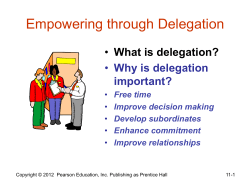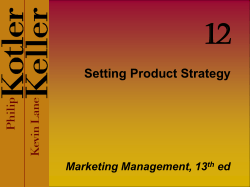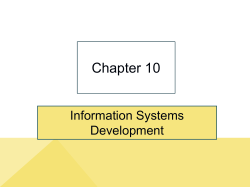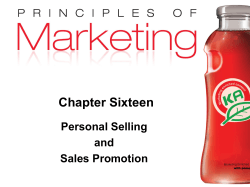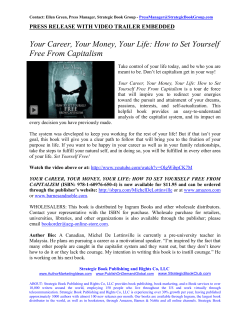
Document 240251
Name
Class
Date
• Review and Reinforce
Sponges, Cnidarians, and Worms
What Is an Animal?
Understanding
Main Ideas
Fill in the blank ovals to complete this concept map.
1--4.
four functions are
Building Vocabulary
From the list below, choose the term that best completes each sentence.
cells
vertebrates
adaptations
asexual reproduction
phyla
fertilization
organ
invertebrate
22. A group of several different tissues is called a(n)
23. Biologists classify animals into major groups called
is the joining of an egg cell and a sperm cell.
25.
are animals that have a backbone.
26.
d,: i/
are the basic units of structure and function in living things.
27. Structures or behaviors that allow animals to perform
basicfunctions
in their environments
are called
&c co :\c,.t
the
e, %
28. An animal without a backbone is called a(n)
is the process by which'a single organism produces a
new organism identical to itself.
@ Pearson
Education,
Inc.,publishing
asPearson
Prentice
Hall.
Allrights
reserved.
Name
Class
Date
Sponges, Cnidarians, and Worms
Sponges
• Review and Reinforce
and Cnidarians
Understanding
Main Ideas
Answer thefollowing questions on a separatesheet of paper.
1. What function
2. H qw toes
3. Descr
does water perform
for sr onges?
sponge defend itsel'f.
e two metVods
of sponge
reproduction.
4. In the diagram, identify tl e two different body plans of c darians, o
Where is the mouth on each? Which animal probably swims?
BodyPlan: 1"
5. How do cnidarians
"
C t.k ",
reproduce?
BodyPlan:
-%-: -,, ,\ -
j)(r
}7 )
j
).,.kck i(x
6. Describe how a c6ral reef is formed.
¢--
Building Vocabulary
c,.GcLt:\
Write an answerfor each of thefollowing questions in the spaces provided.
)
Explain what cnidarians are by describing how they feed and what kind-of environments
they live in. Give three examples.
%<,.,
" "
I
J
,
.A
-
"
]
-
'
I
What is a larva?
© Pearson
Education,
Inc.,publishing
asPearson
Prentice
Ha![.
Allrights
reserved.
!
I
K"
x
Name
Date
Sponges, Cnidarians, and Worms
Connecting
• Connecting
Class
Concepts
Concepts
Develop a concept map that uses the Key Concepts and Key Terms from this
chapter. Keep in mind the big idea of this chapter. The concept map shown
is one way to organize how the information in this chapter is related. You
may use an extra sheet of paper.
d7
t
Eg
,._.
© Pearson
Education,
Inc.,publishing
asPearson
Prentice
Hell.
Allrights
reserved.
Name
Date
Class
Mollusks, Arthropods, and Echinoderms
• Review and Reinforce
Arthropods
Understanding
Main Ideas
Read each description. Decide which animal group bestfits each question. Write
your answers on a separate sheet of paper.
1. They are invertebrates with an exoskeleton, segmented body, and jointed
appendages. They have an open circulatory system and reproduce
sexually. Their name comes from the Greek for "joint-leg." What are they?
2. They have highly segmented bodies with one pair of legs attached to each
segment. They are predators
with venom.
100 segments. What are they?
Some of them have more than
C €I"k \ e C %
3. They all have two body sections and eight legs. Some of them are
predators with fangs or a stinger; others are parasites. None of them have
antennae. What are they?
;, W%'b,
\c) %
4. They have segmented bodies with two pairs of legs on each segment.
Most eat decaying leaves. They curl up into a ball when something
disturbs them. What are they?
,13rk 1\ C,(X%
Building Vocabulary
From the list below, choose the term thatbest completeseachsentence. Use each term
only once.
abdomen
exoskeleton
antennae
metamorphosis
5. An arthropod'sdrying out.
j,( , Jqff )f
6. The heads of some arthropods
contain sense organs.
7. Some animals go through
molting
- ' X
have
a process
protects it and keeps it from
(
v
k;l'
called
,'
, which
"L
'. /YUL, ',v J .£)7 jgk ',9"
during their life cycle in which their bodies undergo dramatic changes m form as they develop.
8. Tha hind body section of an aract nid is called its
9. The process of shedding an outgrown exoskeleton is called
© Pearson
Education,
Inc.,publishing
asPearson
Prentice
Hall.
Allrights
reserved.
Name
Date
Mollusks, Arthropods, and Echinoderms
Class
• Review and Reinforce
Echinoderms
Understanding
Main Ideas
Write the letter of the correct answer on the line at the left.
1. Which of the following is not a characteristic of echinoderms?
a. 5-part radial symmetry
b. endoskeleton
c. live in freshwater
d. water vascular
O
system
2. Which of the following is not an echinoderm?
a. fiddler crab
b. brittle star
c. sea urchin
d. sea cucumber
Which of the following is not a function of tube feet?
a. move along ocean floor
b. catch food
c. grip surfaces
d. digest food
The life cycle of an echinoderm includes all of the following except
a. eggs
b. metamorphosis
c. asexual reproduction
d. fertilization
Answer thefollowing.
5. Describe how a sea star
its food.
Building Vocabulary
Fill in the blank to complete each statement.
6. The/,
.
, V '-' t , c,.
" ]
consists of fluid-filled
tubes within
the echinoderm's body.
7. An echinoderm has a(n)
its body.
( 'V. ('V$/q f' } £ " C v
8. Animals in the ( _Q \ N ;,C k ,
symmetrical
invertebrates
that supports
phylum are radially
that live on the ocean floor.
© Pearson
Education,
Inc.,publishing
asPeorson
Prentice
Hall.
Allrights
reserved.
Name
Mollusks, Arthropods, and Echinoderms
Connecting
Class
Date
• Connecting
Concepts
Concepts
Develop a concept map that uses the Key Concepts and Key Terms from this
chapter. Keep in mind the big idea of this chapter. The concept map shown
is one way to organize how the information in this chapter is related. You
may use an extra sheet of paper.
© Pearson
Education,
Inc.,publishing
asPearson
Prentice
Hall.
Allrights
reserved.
Name
Date
Fishes, Amphibians, and Reptiles
Class
• Review and Reinforce
Fishes
Understanding
Main Ideas
Answer thefollowing questions on a separatesheetof paper.
1.
What function
do gills perform?
i- '
) :
0'
.
';e
\
}-
tt;e,
2. How is the skeleton of a shark similar to the skeleton of a jawless fish?
3.
What are the major groups
of fishes?
.i " : Ix %. (r; -
4. What kind of fertilization do most fish have?
5. What is the function of a swim bladder?
t'
_l > -(£k
\\ 3 1, , '.-'>.
%t '- -:
Tx
Determinewhethereach statementis true or false. If it is true, write true. If it is
false, change the underlined word or words to make the statementtrue.
(
6.
Sharks are bons fishes.
7.
Fishes are endotherms.
8. Most species of fishes belong to the bon
fishes group.
Building Vocabulary
Fill in the blank to complete each statement.
9. The skeleton of a jawless fish is made of
tissue that is more flexible than bone.
_ tk v
, / a- 4
,a
10. Most bony,fishes have a gas-filled organ called a(n)
"
t,;. , , )} 0 dJ, which helps stabilize the fish at different
depths in the water.
© Pearson
Education,
Inc.,publishing
asPearson
Prentice
Hall.
Allrights
reserved.
h¢'0 ,
t) t' ', i
i'-', \
-
Name
Date
Fishes, Amphibians, and Reptiles
Class
• Review and Reinforce
Reptiles
Understanding Main Ideas
Write the letter of the word or phrase that completeseach statement.
1. Three adaDtations
__
that all reptiles have for conserving
are
and
] ,IC
€
,
J J
-( -
,
,. ,. l . Sl-
,
l(q
2. Snakes have specialized
- ,-
i
SK',,x
enable them to eat large prey.
3. All reptiles breathe with
,
•
O, ._
A. lungs
water
that
B. eyelids
C. eggs with shells
D. jaws
I 1- )
4. Snakes look a lot like lizards, but snakes don't have
E. kidneys
F. thick skin
Building Vocabulary
Write a definitionfor each of thefollowing terms.
°
i
, \)--
6. Amniotic egg
J "
© Pearson
Education,
Inc.,publishing
asPearson
Prentice
Hall.
Allrights
reserved.
Name
Class
Date
Fishes, Amphibians, and Reptiles
• Key Terms
Key Terms
Use the clues to identify the words for the puzzle. Write the words on the lines.
Thenfind the words hidden in the puzzle and circle them. Words are across or
up-and-down.
Clues
Key Terms
An animal whose body controls its own temperature
The hardened remains of a living thing that existed long ago
An animal that has a notochord,
in the throat area
nerve cord, and slits
d'_]- c
A flexible rod that supports an animal's back
The specific environment in which an animal lives
A bone found in the backbone
A vertebrate that lives in water and has fins
g
i
e
v
-
d
,
o
g
e
r
t
e
b
r
a
'
k
r
i
s
u
a
h
m
o,
f
___.aa
b
i-
1--
_g
g'
y
t.
r_
b
h
a
u
e
1
w
oi=' s
d
a
t
r
i
u
m c
f
e
s a j
1
i i,h c
w
t
r
t'
h
v
1
P
n
c
r
i
/it
fi
a
i Isf y urine
q
r (,.b
m
p
k
g
w
d
t
h
e
r
m,w
y
d o j
s
r
r
b
o
d
a
!
(__e
n
o
© Pearson
Education,
Inc.,publishing
usPearson
Prentice
Hall.
Allrights
reserved.
Name
Date
Birds and Mammals
Class
• Review and Reinforce
Birds
Understanding
Main Ideas
Answer thefollowing questions.
1. What are four characteristics that all birds share?
2. What are thr e adaptations that enable birds to fly?
,.J
l
l
3. What are two functiqns of feathers?
f
J
j
4. Briefly describe a bird's heart and circulatory system.
5. Give two examples that show how the bills of birds allow them to live in
diverse environments.
"
J
Building Vocabulary
From the list below, choose the term that best completes each sentence.
contour feather
crop
bird
gizzard
6. A bird's food is stored in its (°
digested.
down feather
-
(2'
f
before it is
7. A
8.
9.
(2, i. ,,-- b , } - c
is soft and used for insulation.
',
A
1'!
is an endothermic vertebrate that lays eggs__
and has feathers nd a four-chambered
heart.
,
The C , ?.._2 o. L'.
is a muscular, thick-walled part of a
bird's'gtomaclKwhere partially digested food is ground up.
10. A ('O'X -t -c
;M@ --4 ,'-
gives shape to a bird's body
and helps a
bird balance and steer during flight.
© Pearson
Education,
Inc.,publishing
asPearson
Prentice
Hall.
Allrights
reserved.
,4
Name
Date
Birds and Mammals
• Reviewand
Class
Reinforce
Mammals
Understanding
Main Ideas
Answer thefollowing questions.
1. What are four characteristics shared by all mammals?
I
2.
What information
can you infer from the size and shape of a mammal's
teeth?
3.
Brieflydescribe
a mammal's
heart and circulatory
system.
I
4. Wt)ere in a mammal's body does oxygen enter the bloodstream?
M3
o
If a mammal has a dense coat of fur, what might you infer about the
cli nate where that mammal lives?
Building Vocabulary
From the list below, choose the term that best completes each sentence.
monotremes
diaphragm
placenta
mammal
6.
7.
marsupial
l ff 4, L_ o, ' \t
are mammals whose young are born at a
very early tage of development--they
usually continue to develop in a _
pouch on their mother's body.
'
A
i( , , , , ' ,
is an organ that passes materials such as
roost and oxygen from the mother to the developing embryo, and carries
the embryo's
wastes away.
8.
There are just three species of ] ' " I
9.
Alarge muscle called the
breathe.
10. Every
l
'k
,Fr
\x /
. \O,,l
xf,-,
r- 'l XX
l
helps mammals
has hair or fur, but sometimes
not
very much.
© Pearson
Education,
Inc.,publishing
asPearson
Prentice
Hall.
Allrights
reserved.
Name
Date
Birds and Mammals
Connecting
• Connecting
Class
Concepts
Concepts
Develop a concept map that uses the Key Concepts and Key Terms from this chapter. Keep in mind
the big idea of this chapter. The concept map shown is one way to organize how the information in
this chapter is related. You may use an extra sheet of paper.
© Pearson
Education,
Inc.,publishing
asPearson
Prentice
Hall.
Allrights
reserved.
© Copyright 2025
